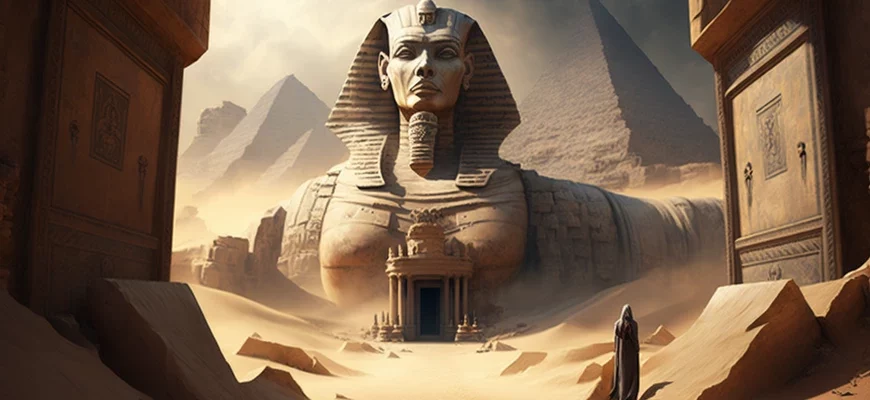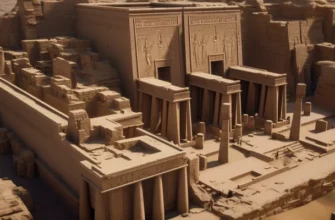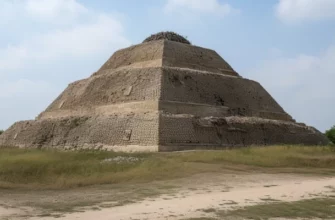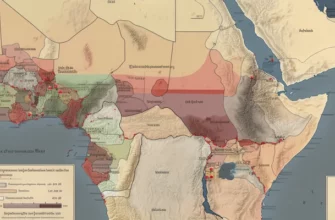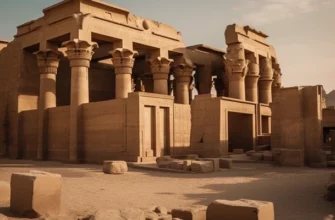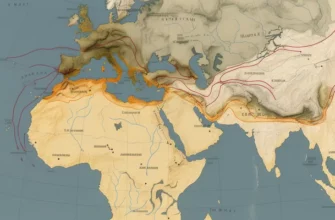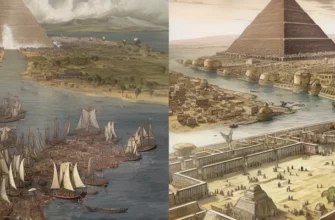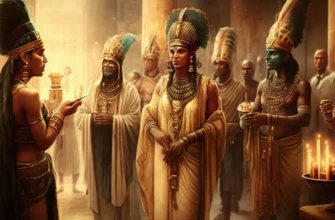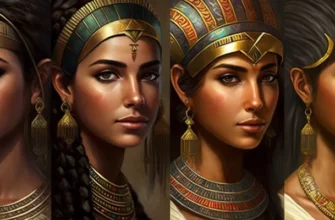Egypt is one of the oldest civilizations with a rich history and culture. Their pyramids and temples remain a wonder to us to this day. The Sphinx, the symbol of Egypt, attracts tourists from all over the world. The mysteries of Egyptian civilization, such as the construction of the pyramids and the art of mummification, remain a mystery to science. Egypt is an amazing country that is worth visiting to touch the secrets of ancient history.
History and culture of Ancient Egypt
Ancient Egyptian civilization was one of the most famous and interesting in human history. It had a great influence on the development of world culture, science, and art. The Egyptians built huge pyramids, which remain one of the wonders of the world. Their culture was also rich and diverse, with unique forms of art and architecture, such as temples and Sphinx statues. Egyptian religion had a great influence on the life and behavior of the Egyptians. The legacy of ancient Egyptian civilization is still felt in the modern world, with its influence on art, science, and culture.
Ancient Egyptian Civilization
Ancient Egyptian civilization was one of the most remarkable and advanced in human history. It existed for many thousands of years and left behind many traces that are still being studied by scientists and archaeologists. Egyptian civilization is known for its huge pyramids, complex mechanisms, and unique artistic creations. The Egyptians were also known for their religion, which had a great influence on the life and culture of this ancient civilization. The legacy of ancient Egyptian civilization is still felt in our world today, with its influence on culture, art, and science.
Ancient Egyptian civilization has left us with many mysteries. It existed for over 3,000 years and is considered one of the oldest civilizations in the world. Ancient Egyptian culture was rich in art, science, architecture, and religion.
Religion and Mythology
Religion and mythology were an integral part of life in ancient Egyptian civilization. Egyptian religion was polytheistic, meaning that they believed in many gods and goddesses, each of which was associated with a specific sphere of life. This belief was reflected in mythology, which was complex and diverse and contained many legends and stories about gods and heroes. Egyptian mythology was an important part of Egyptian culture and beliefs. Mythology reflected their beliefs about the afterlife, life after death, and the role of gods in people’s lives. The influence of Egyptian religion and mythology can be seen in various cultures and arts that use motifs and symbols from ancient Egyptian culture.
Ancient Egyptian religion was of great importance to the entire country. They believed in a pantheon of gods and goddesses who ruled over different aspects of life. Among them were Ra, the sun god; Osiris, the god of the underworld; and Isis, the goddess of motherhood and family.
Art and Architecture
The art and architecture of Ancient Egypt were impressive and unique. Egyptian art focused on detail and symmetry, as well as the use of bright colors. Some of the most famous works of art include pyramids, sculptures, wall paintings, and furniture. Egyptian architecture was also impressive, with huge temples, palaces, and city buildings. Among the most famous architectural works of Ancient Egypt are the Temple of Amun-Ra at Karnak and the Temple of Isis at Philae. The art and architecture of Ancient Egypt remain remarkable to this day and are a testament to the creativity of this great civilization.
Ancient Egyptian art and architecture are impressive in their beauty and complexity. They built huge pyramids, which were used as tombs for the pharaohs. They also built huge temples and statues that adorned the cities.
Outstanding monuments of Ancient Egypt
Ancient Egypt left the world many outstanding monuments that still fascinate with their grandeur and beauty. Among the most famous are the pyramids, including the Pyramid of Giza, the Pyramid of Step, and the Pyramid of Khafre. Other famous monuments include temples, such as the Temple of Amun-Ra in Karnak, the Temple of Isis in Philae, and the Temple of Luxor. The Valley of the Kings has preserved the crypts and tombs of the pharaohs, among which the most famous is probably the crypt of Tutankhamun. Ancient Egyptian art is impressive for its detail and symmetry, which can be seen in the sculptures and paintings on the walls of the temples. All these monuments are evidence of the prosperity and greatness of ancient Egyptian civilization, which left an indelible mark on human history.
Pyramids
Pyramids are one of the most famous and mysterious structures of Ancient Egypt that have survived to this day. They were built between 2700 and 1700 BC and served as burial places for pharaohs. The most famous pyramids include the Pyramid of Giza, the Step Pyramid, and the Pyramid of Khafre.
The Pyramid of Giza is the largest pyramid in Egypt, with a height of over 146 meters. It was built during the reign of Pharaoh Khufu and completed in 20 years. The pyramid has three chambers: an underground chamber, a royal chamber, and a lower chamber.
The Step Pyramid is the first pyramid to have a pyramidal shape, with a height of about 60 meters. It was built by Pharaoh Djoser in the 27th century BC and is the best preserved.
The Cheops Pyramid is the last pyramid built in Ancient Egypt. It is 62 meters high and was built by Pharaoh Menkaure. It is known for its complex structure, which consists of three parts: a pyramidal top, an inner vestibule, and an outer vestibule.
Pyramids are among the most impressive and mysterious structures in the world. They bear witness to the glorious history of Ancient Egypt and remain a source of research for archaeologists and historians to this day.
Temples
The temples of Ancient Egypt were places of worship and were renowned for their artistic and architectural grandeur. They served to honor the gods and pharaohs and to perform ceremonies and rituals.
Among the most famous temples of Ancient Egypt is the Temple of Amun at Karnak, which was built during 2000 BC and was one of the largest temples in the world. Also famous are the Temple of Isis at Philae, dedicated to the goddess Isis, and the Temple of Horus at Edfu, dedicated to the god Horus.
The temples are impressive for their architecture and luxurious decor, where every wall, every column, and every relief was executed in extraordinary detail. Many temples have been destroyed over time, but some have been restored and are now popular tourist attractions.
The temples of Ancient Egypt are an important source for studying the history and culture of this ancient civilization. They show the grandeur and religious significance they had for the people of that time and continue to fascinate with their beauty and mystery.
The most famous of these is the Temple of Amun at Karnak, which was the largest building in the world until the 15th century.
Sphinx
The Sphinx is a symbol of Ancient Egypt, a statue with a human head and a lion’s body. The most famous of these is the Sphinx at Giza, over 20 meters high.
The Sphinx of Ancient Egypt is a majestic monument with a human head and a lion’s body, considered a symbol of wisdom and protection. It is located next to the Pyramid of Cheops in Giza and has adorned the desert for over 4,500 years.
The Sphinx was built during the time of Ancient Egypt, around 2500 BC, and was intended to guard the pyramid and the surrounding area. It was also associated with the sun god Ra, who was reflected in its face.
The Sphinx of Ancient Egypt has always attracted the attention of travelers and explorers with its mystery and intrigue. It has undergone many transformations over the centuries, including destruction and restoration, and remains one of the most famous symbols of Ancient Egypt to this day.
The Sphinx of Ancient Egypt continues to attract tourists and researchers with its beauty and mystery. It is an important part of the world’s cultural heritage and a source for studying the history and culture of this ancient civilization.
Secrets of Ancient Egypt
Ancient Egypt is one of the most mysterious civilizations in human history, leaving behind many secrets and mysteries. Here are a few of them:
The construction of the pyramids – to this day, it remains unclear how the ancient Egyptian builders were able to construct such magnificent structures without the use of powerful technology and machinery. It is believed that each pyramid took more than 20 years to build and involved more than 100,000 workers.
Pyramid passages – it is believed that the pyramids of Ancient Egypt contain mysterious passages and chambers that may not yet have been discovered. For example, the tomb of Queen Nefertiti, wife of Pharaoh Akhenaten, has not yet been found.
Temple inscriptions – on the walls of ancient Egyptian temples, there are many mysterious inscriptions and symbols that cannot yet be deciphered. For example, a mysterious inscription on the wall of the Abu Simbel temple refers to “the place where the sun rises twice” and “the place where one changes one’s name.”
Mummies – Ancient Egyptian mummies are among the most mysterious objects in human history. They remain fairly well preserved, allowing us to study not only the physical characteristics of the ancient Egyptians, but also their religious and cultural beliefs.
Although many of the mysterious aspects of Ancient Egypt have been solved, there are some secrets that remain unknown to this day. One of the most famous mysteries is the construction of the pyramids. How was it possible to build such huge structures with such great precision and without modern technology?
Another mystery is how ancient Egyptian civilization was able to achieve such a level of development in science, mathematics, and astronomy. Their knowledge in these fields amazed the world of that time and has survived to this day.
There are also mysteries related to the mythology and religion of Ancient Egypt. It is interesting to wonder how they believed in the existence of numerous deities and what rituals they practiced.
Even after many excavations and archaeological studies, Ancient Egypt remains mysterious and enigmatic. However, it is this mystery that makes it one of the most interesting subjects of study for historians and archaeologists around the world.
Ancient Egyptian civilization has left us with many secrets. Why were the pyramids built? How were they able to construct such enormous buildings without modern technology? What secrets are hidden in the inner chambers of the pyramids? These questions remain unanswered to this day.
Conclusion
Egypt – ancient and mysterious is one of the most mysterious and interesting civilizations in world history. It has left us with many valuable scientific discoveries, unusual traditions, and artistic masterpieces that continue to fascinate people around the world to this day. Studying Ancient Egypt not only helps us understand the richness of history and culture, but also allows us to better understand how humanity achieved success in various fields of knowledge, even in the distant past.
Ancient Egyptian civilization is one of the most interesting mysteries of human history. Their art, architecture, and religion are still impressive to us today. Egypt is a country with a rich history and culture that is worth exploring and studying.
